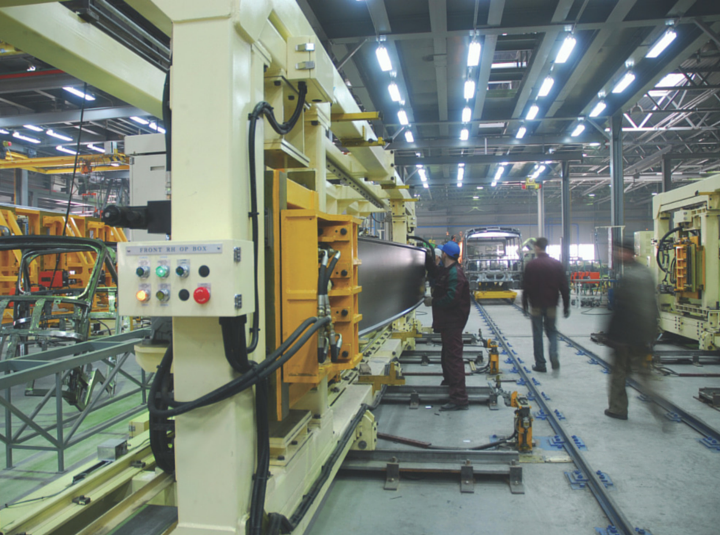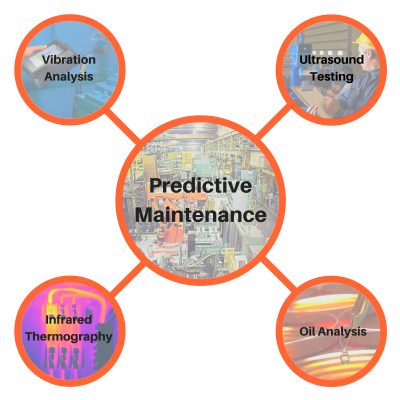- Electrical Training
- Safety
- Electrical Compliance
- Electrical Automation
- Electrical Maintenance
- Mechanical Training
- HVAC
- Codes and Standards
- Fluid Power
- Maintenance
- View All Training Programs
-
View All Electrical Safety Training ProgramsTop Electrical Safety Training Programs
- Arc Flash Electrical Safety [Based on NFPA 70E®]
- Electrical Safety: NFPA 70E Refresher
- Electrical Safety Awareness
- Electrical Safety Practical Skills for Switchgear
- Electrical Safety: Power Generation, Transmission & Distribution [based on OSHA 1910.269]
- Seguridad Eléctrica en el centro de trabajo, [Basado en el manual NFPA 70E® 2021]
- Electrical Safety, Operation and Maintenance for Medium Voltage (MV) Distribution Systems and Equipment
Upcoming Training Programs- 02/02 - 02/03 : Live Online Training , CO Arc Flash Electrical Safety [Based on NFPA 70E®]
- 03/02 - 03/03 : Live Online Training , CO Arc Flash Electrical Safety [Based on NFPA 70E®]
- 03/24 - 03/25 : Centennial , CO Electrical Safety, Operation and Maintenance for Medium Voltage (MV) Distribution Systems and Equipment
- 04/06 - 04/07 : Live Online Training , CO Arc Flash Electrical Safety [Based on NFPA 70E®]
- 04/30 - 04/30 : Centennial , CO Electrical Safety Practical Skills for Switchgear
-
View All Electrical Electrical Compliance Training ProgramsTop Electrical Electrical Compliance Training Programs
- 2023 NFPA 70® – NATIONAL ELECTRICAL CODE® [NEC]
- Electrical Systems: SOARES Grounding & Bonding
- Electrical Systems: Hazardous Locations
- NEC® – Analysis of Changes 2020 with Practical Exercises
- NFPA 110® – Emergency & Standby Power Systems
- NFPA 70B® Standard Overview
- NFPA 70B Standard for Electrical Equipment Maintenance (8-hr for Maintenance Technicians)
- NFPA 72: National Fire Alarm & Signaling Code®
- NFPA 79® – Electrical Standard For Industrial Machinery®
- NICET I & II
- National Electrical Safety Code® [NESC]
- NEC® – Analysis of Changes 2023
- Connecticut Four Hour 2025 Electricians Continuing Education Course
- 2023 National Electrical Code® With 2023 Washington State’s Electrical Code Amendments (based on Washington Administrative Code 296-46B)
Upcoming Training Programs- 01/28 - 01/29 : Live Online Training , CO NICET I & II
- 02/09 - 02/10 : Live Online Training , CO Electrical Systems: Hazardous Locations
- 03/25 - 03/26 : Live Online Training , CO Electrical Systems: Hazardous Locations
- 06/26 - 06/26 : Live Online Training , CO Connecticut Four Hour 2025 Electricians Continuing Education Course
- 06/26 - 06/26 : Live Online Training , CO Connecticut Four Hour 2025 Electricians Continuing Education Course
-
View All Electrical Electrical Automation Training ProgramsTop Electrical Electrical Automation Training Programs
- Instrumentation & Process Control
- PLCs [Programmable Logic Controllers]: Automation Systems
- PLCs [Programmable Logic Controllers]: ControlLogix & RSLogix 5000
- PLCs [Programmable Logic Controllers]: Fundamentals
- PLCs [Programmable Logic Controllers]: Siemens Simatic S7
- Tuning DDC/Process Control Loops
- Variable Frequency Drives [VFD]
Upcoming Training Programs- 02/03 - 02/05 : Centennial , CO Variable Frequency Drives [VFD]
- 04/06 - 04/08 : Centennial , CO PLCs [Programmable Logic Controllers]: Fundamentals
- 05/19 - 05/21 : Centennial , CO Variable Frequency Drives [VFD]
- 08/11 - 08/13 : Centennial , CO Variable Frequency Drives [VFD]
- 11/10 - 11/12 : Centennial , CO Variable Frequency Drives [VFD]
-
View All Electrical Electrical Maintenance Training ProgramsUpcoming Training Programs
- 02/10 - 02/11 : Live Online Training , CO Electrical Print Reading: Blueprints & Schematics
- 03/31 - 04/01 : Centennial , CO Basics of Industrial Electricity
- 04/02 - 04/03 : Centennial , CO Electrical Motor Control Circuits: Troubleshooting
- 04/07 - 04/09 : Centennial , CO Fiber Optics
- 05/12 - 05/13 : Centennial , CO Basics of Industrial Electricity
-
View All Mechanical HVAC Training ProgramsTop Mechanical HVAC Training Programs
- Balancing of Water and Air Systems
- Boilers: An Operational Workshop
- HVAC: Brazing [Advanced]
- Air Conditioning & Refrigeration: Advanced
- HVAC: Air Conditioning & Refrigeration
- HVAC: Principles of Heating & Ventilation
- Chillers: Operation & Maintenance of Chilled Water Systems
- Steam Distribution Systems
- Water Treatment for Boilers and Chilled Water Systems
- EPA 608 Certification Exam Preparation & Proctoring
Upcoming Training Programs- 02/10 - 02/12 : Centennial , CO Boilers: An Operational Workshop
- 02/24 - 02/26 : Centennial , CO Chillers: Operation & Maintenance of Chilled Water Systems
- 03/02 - 03/04 : Centennial , CO HVAC: Air Conditioning & Refrigeration
- 03/05 - 03/05 : Centennial , CO EPA 608 Certification Exam Preparation & Proctoring
- 03/24 - 03/26 : Centennial , CO Chillers: Operation & Maintenance of Chilled Water Systems
- View All Mechanical Codes and Standards Training Programs
-
View All Mechanical Fluid Power Training ProgramsUpcoming Training Programs
- 03/03 - 03/06 : Centennial , CO Hydraulics & System Troubleshooting
- 06/02 - 06/05 : Centennial , CO Hydraulics & System Troubleshooting
- 06/23 - 06/25 : Centennial , CO Centrifugal Pumps
- 09/09 - 09/11 : Centennial , CO Centrifugal Pumps
- 10/06 - 10/09 : Centennial , CO Hydraulics & System Troubleshooting
-
View All Mechanical Maintenance Training ProgramsUpcoming Training Programs
- 02/05 - 02/06 : Centennial , CO Shaft Alignment with Laser Technology
- 03/03 - 03/04 : Centennial , CO Electric Motors: Understanding & Troubleshooting
- 05/05 - 05/06 : Centennial , CO Electric Motors: Understanding & Troubleshooting
- 05/07 - 05/08 : Centennial , CO Shaft Alignment with Laser Technology
- 07/28 - 07/29 : Centennial , CO Electric Motors: Understanding & Troubleshooting
Select the following link if you would like to recover a report that has been previously deleted.
NTT Blog

What’s The Impact of Predictive Maintenance Programs?
Since the advent of maintenance programs that tried to prolong the life of equipment, preventive maintenance has been the staple. As predictive maintenance technologies became viable, the addition of this aspect has increased the reliability of equipment and systems substantially. It is generally true that the most effective form of facilities maintenance is preventive and predictive coming together in a cohesive program.
Studies and independent surveys have estimated that a properly functioning predictive maintenance program can provide major savings and a notable return on investment. In order to reap the benefits of a predictive maintenance program, your company must be committed to these practices starting from upper management on down.  Predictive maintenance programs are discussed directly in the Operations & Maintenance Best Practices Release 3.0 published by the U.S. Department of Energy stating that, “a properly functioning predictive maintenance program can provide a savings of 8% to 12% over a program utilizing preventive maintenance alone. Depending on a facility’s reliance on reactive maintenance and material condition, it could easily recognize savings opportunities exceeding 30% to 40%.” The elimination of breakdowns, reduction in maintenance costs and downtime, increase in production and an overall return on investment are all a result of a well implemented predictive maintenance program.
Predictive maintenance programs are discussed directly in the Operations & Maintenance Best Practices Release 3.0 published by the U.S. Department of Energy stating that, “a properly functioning predictive maintenance program can provide a savings of 8% to 12% over a program utilizing preventive maintenance alone. Depending on a facility’s reliance on reactive maintenance and material condition, it could easily recognize savings opportunities exceeding 30% to 40%.” The elimination of breakdowns, reduction in maintenance costs and downtime, increase in production and an overall return on investment are all a result of a well implemented predictive maintenance program.
To start the process of implementing a predictive maintenance program or to enhance your understanding of the technologies available, check out any one of these NTT Training seminars: Vibration Analysis, Infrared Thermography, Ultrasound Testing, Oil Analysis or Intro to Predictive Maintenance.
For more information Contact NTT Training or call (855) 712-7353.
Recent Blog Posts
- NEC: National Electric Code (2026 edition)
- NFPA 79: Electrical Standard for Industrial Machinery (2024 Edition)
- EPA 608 Certification and Training
- NFPA 72: National Fire Alarm & Signaling Code®: What You Need To Know
- Avoid Inspection Failures in Washington: Get Your Team Ready for the Electrical Code Amendments
- Categories
- Uncategorized (3)
- Electrical Training Programs (96)
- Code & Standards (30)
- Electrical Maintenance (18)
- Mechanical HVAC (9)
- Safety (39)
- Mechanical Training Programs (75)
- Code & Standards (10)
- Electrical Safety (8)
- HVAC (19)
- Maintenance (19)
- Fluid Power (19)
- News (13)
- Onsite Training (2)
- Contractor Management (1)
- National Electric Code (7)
- OSHA Rules and Requirements (19)
- General Safety Tips (4)
- Industrial Safety (4)
- Plumbing Standards (3)
- Electrical Blueprint Reading (6)
- Natural Gas Safety (3)
- Ultrasonic Testing (1)
- PLC (11)
- High Voltage (4)
- Oil Analysis (2)
- Centrifugal Pumps (4)
- Variable Frequency Drives (6)
- Welding Safety (7)
- Chillers (3)
- Hazardous Locations (5)
- Confined Spaces (6)
- Infrared Thermography (2)
- NFPA 72 (4)
- Process Control Loops (3)
- Backflow Prevention (1)
- Electrical Grounding (2)
- Industrial Circuits (2)
- Boilers (5)
- Shaft Alignment (3)
- Hoisting and Rigging (3)
- Fiber Optics (5)
- Refrigeration (1)
- Arc Flash (8)
- NFPA 110 (1)
- Conveyor Systems (1)
- NFPA 70E (2)
- Process Instruments (1)
- Vibration Analysis (1)
- Industrial Generators (2)
- Life Safety Code (4)
- Electrical Switchgear (1)
- NFPA 79 (2)
- Steam Distribution Systems (2)
- Preventative Maintenance (2)
- Electrical Codes & Standards (5)
- Mechanical Maintenance (5)
- Mechanical Fluid Power (1)
- Electrical Safety (2)
Filter Blogs
- October 2025 (2)
- September 2025 (1)
- August 2025 (1)
- July 2025 (1)
- June 2025 (1)
- April 2025 (2)
- March 2025 (1)
- February 2025 (1)
- January 2025 (1)
- December 2024 (1)
- November 2024 (1)
- October 2024 (1)
- September 2024 (1)
- August 2023 (1)
- July 2023 (1)
- June 2023 (1)
- April 2023 (1)
- March 2023 (1)
- February 2023 (1)
- December 2022 (1)
- October 2022 (1)
- August 2022 (1)
- July 2022 (1)
- October 2019 (9)
- September 2019 (8)
- August 2019 (9)
- July 2019 (8)
- June 2019 (8)
- May 2019 (9)
- April 2019 (9)
- March 2019 (7)
- February 2019 (4)
- January 2019 (9)
- December 2018 (7)
- November 2018 (7)
- October 2018 (9)
- September 2018 (6)
- August 2018 (7)
- July 2018 (9)
- June 2018 (8)
- May 2018 (9)
- April 2018 (9)
- March 2018 (8)
- February 2018 (8)
- January 2018 (9)
- December 2017 (9)
- November 2017 (8)
- October 2017 (9)
- September 2017 (8)
- August 2017 (7)
- July 2017 (5)
- June 2017 (7)
- May 2017 (8)
- April 2017 (3)
- March 2017 (7)
- February 2017 (3)
- January 2017 (4)
- December 2016 (7)
- November 2016 (4)
- October 2016 (7)
- September 2016 (5)
- August 2016 (6)
- June 2016 (1)
- May 2016 (2)
- April 2016 (2)
- March 2016 (1)
- January 2016 (2)
- October 2015 (1)
- August 2015 (1)
- July 2015 (3)
- May 2015 (1)
- January 2015 (3)
- April 2014 (4)
Our Mission:
Deliver solutions to our clients (and their global workforce) designed for safety, productivity and profitability.
Our Vision:
Empowering clients and their employees to be safe and skilled.
NTT Training Inc. has been accredited by the Accrediting Council for Continuing Education & Training (ACCET). 
 Better Business Bureau
Better Business Bureau
A Training Division of ECPI University
